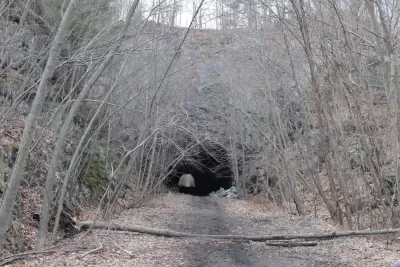The agency plans to restore service along the Lackawanna Cutoff and develop a storage yard to protect rail equipment during extreme weather.

Mischa Wanek-Libman reports on several projects approved by the New Jersey Transit Board of Directors aimed at restoring service to Sussex County and protecting rail cars from extreme weather.
“The tunnel is described by NJ Transit as a crucial element in its plans to restore rail service to Sussex County from Port Morris to a new proposed station in Andover as part of the Lackawanna Cutoff Restoration project, which will also see the replacement of approximately seven miles of track.” Additionally, “The Delco Lead Project is one of the agency’s resiliency projects that will invest in the design and expansion of an area identified following Superstorm Sandy as an ideal location to protect railcars and equipment from extreme weather events, as well as speed their return to service.”
According to the article, “The County Yard and four-mile-long Delco Lead are located above the flood plain with relatively no adjacent trees, which makes it ideal as a safe-haven for rail cars and locomotives. The Service and Inspection Facility will allow for inspection of rail equipment and its return to service following extreme weather.”
FULL STORY: NJ Transit Board advances resiliency and infrastructure improvements

Trump Administration Could Effectively End Housing Voucher Program
Federal officials are eyeing major cuts to the Section 8 program that helps millions of low-income households pay rent.

Planetizen Federal Action Tracker
A weekly monitor of how Trump’s orders and actions are impacting planners and planning in America.

Ken Jennings Launches Transit Web Series
The Jeopardy champ wants you to ride public transit.

California Invests Additional $5M in Electric School Buses
The state wants to electrify all of its school bus fleets by 2035.

Austin Launches $2M Homelessness Prevention Fund
A new grant program from the city’s Homeless Strategy Office will fund rental assistance and supportive services.

Alabama School Forestry Initiative Brings Trees to Schoolyards
Trees can improve physical and mental health for students and commnity members.
Urban Design for Planners 1: Software Tools
This six-course series explores essential urban design concepts using open source software and equips planners with the tools they need to participate fully in the urban design process.
Planning for Universal Design
Learn the tools for implementing Universal Design in planning regulations.
Ada County Highway District
Clanton & Associates, Inc.
Jessamine County Fiscal Court
Institute for Housing and Urban Development Studies (IHS)
City of Grandview
Harvard GSD Executive Education
Toledo-Lucas County Plan Commissions
Salt Lake City
NYU Wagner Graduate School of Public Service





























